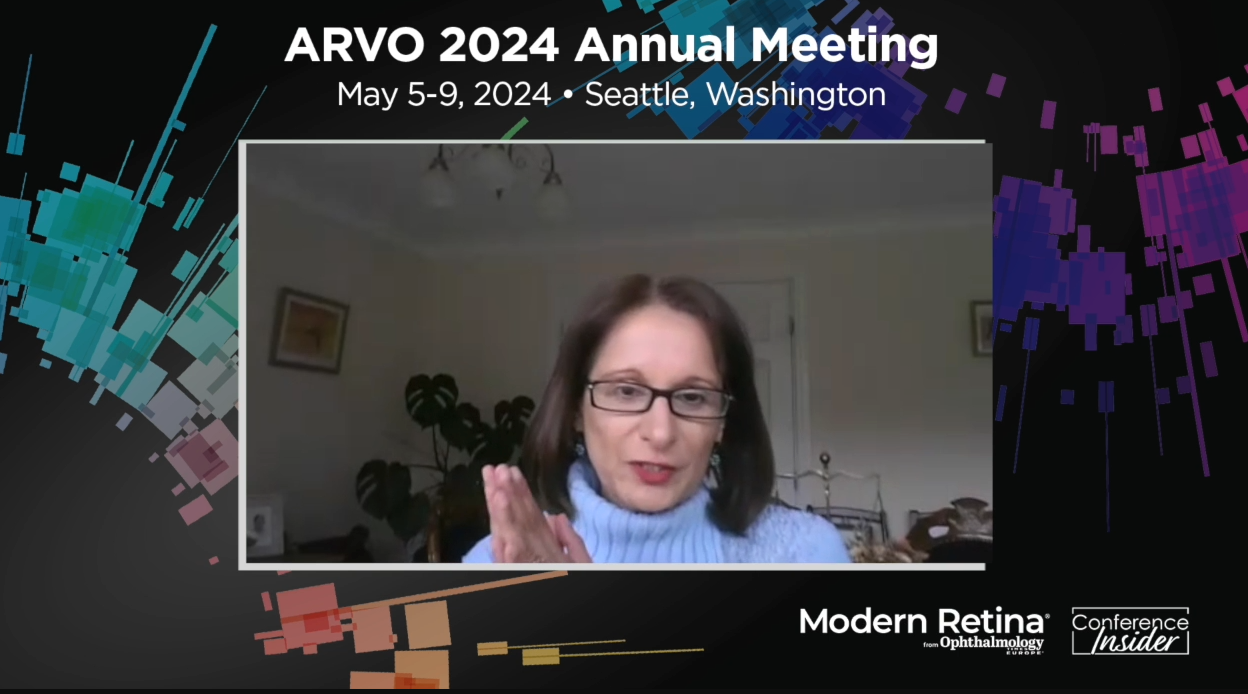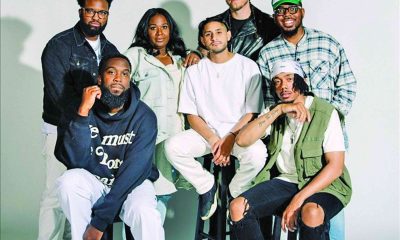David A Berntsen, OD, PhD, FAAO, sat down to discuss his presentation at this year’s ARVO meeting held in Seattle, Washington, about axial growth after discontinuing soft multifocal contact lens wear in the BLINK2 study.
Video Transcript
Editor’s note – This transcript has been edited for clarity.
Hattie Hayes:
Hi, my name is Hattie Hayes, and I’m the editor of Ophthalmology Times Europe. This year’s ARVO meeting is in Seattle, and we’re speaking to some of the attendees about what they’re presenting at the meeting, what they’re most looking forward to, and the exciting data that we’re going to be able to talk about after the conference.
Joining me today I have David Berntsen. We’re going to be speaking about his presentation, which focuses on axial length growth after discontinuing soft multifocal contact lens wear in bifocal lenses in nearsighted children. This is the BLINK 2 study. So I’m really excited that you’re here to speak with me. Myopia management has been a really hot topic recently, and I’m very glad I get to talk to an expert. Thanks for being here.
David A Berntsen, OD, PhD, FAAO:
Thanks for the opportunity to speak.
Hattie Hayes:
Well, to start off, tell me about your ARVO presentation. I’m excited to hear more.
David A Berntsen, OD, PhD, FAAO:
Sure. So, the BLINK study is funded by the National Eye Institute. It started off as a 3-year randomized clinical trial between my team here at the University of Houston College of Optometry and my collaborators at The Ohio State University College of Optometry where, collectively, we enrolled just under 300 kids across both sites and randomly assigned them to wear either standard single-vision soft contact lenses, a medium-add centered distance multifocal contact lens, or a high-add center distance multifocal contact lens with the initial question of, first off, do these lenses slow the progression of myopia? And then also, does the power of the lens that add power matter? Does do you need to have that higher add, for example, in order to slow progression? So essentially, what we found is that, yes, the lenses do work, but you do need to use, at least in the design that we were using, you need to use the highest add power.
We found an effect there where we did find slowing of eye growth, and then also found slowing of myopia progression. So then, bring in the BLINK-2 study, again funded by the National Eye Institute, where our next questions were really wanting to dig into the mechanisms behind the effect that we found, and also, one of the pressing questions that’s out there for any type of myopia control methodology, whether it’s an optical intervention or pharmaceutical intervention, is what happens when the child stops using that intervention? There have been certain studies that have shown, for example with atropine, where you can get an actual what looks like an acceleration in eye growth once the child stops using that drop. Of course, for any treatment to be beneficial, we need the effect to stick around after the child stops wearing it.
So that was a big question that that we wanted to be able to answer with the BLINK-2 to study. So all the children who completed BLINK were invited to participate in the BLINK-2 study, which was another 3 years beyond the the original BLINK study, and all the kids were, for the first 2 years of the study, put into the high-add multifocal lens that we had found slow progression in the original BLINK study. After 2 years of wearing that multifocal lens, we then switched all children into a single vision soft contact lens and followed them for an additional year to look and see what happened to the rate of eye growth, their axial length, and also to look at the myopia progression.
And essentially what we found, in a nutshell, is that both eye growth and myopia progression did increase slightly, but the amount that it increased is more in line with what you would expect for a child of that age. So while we did see a little bit of an increase, it wasn’t a what, sometimes you’ll hear called as a rebound, where there’s a loss of the treatment effect that has already been accrued. Looking at both refractive error, refractive error was progression over the course of that year in the single vision lens, was just barely under a quarter diopter for the year, and then the growth of the eye the axial growth over that year was about 0.8 millimeters in the course of the year, which again, both of those, if you look at normative growth curves for children wearing standard corrections, those are very much in line with what you would expect. So we were pleasantly, we’re happy to see that, in fact, all of the benefits that had been accrued originally from wearing the lenses continue to stick around, and it didn’t matter how long a child had been in multifocal lenses. So some of these kids had been in multifocal ‘s for over 5 years, and some only wore the multifocal for 2 years, because they were in our original control group. All children, it didn’t matter if they hadn’t worn them for a long time or a short amount of time, we didn’t see any difference in what progression look like after kids came out.
Now, 1 other key thing I think it’s important to note is in this study, these kids were at the time of enrollment into BLINK-2 were older now, at this point. So, they were on average about 15 years of age, which then means, by the time we were taking them out of the lens, they were now on average, about 17 years old. We had some kids who were in college, and we were coming out of high school. So again, this is an older group of kids. So, at least what we’re able to talk about is if you keep kids in that long longer amount of time when they get to that older teenage, those older teenage years that appears, at least from these multifocal lenses seems to be an okay time to take them out if you need to without there being any loss of the benefits.
Hattie Hayes:
That’s great to hear, and very interesting. I feel like we don’t talk about the discontinuing use of myopia treatments as much as we should, especially because with lifestyle changes that kids are going through, it’s very much a real thing to consider. So is there anything in these data that surprised you or that you think your colleagues who see your ARVO presentation might be surprised by?
David A Berntsen, OD, PhD, FAAO:
So for this particular presentation, I think it’s what a lot of my colleagues and other myopia researchers would hope that we would see. Because again, for some of the younger kids in some other types of interventions, there have been, there have been these headset rebounds that happen. So this is consistent with another long-term study that used a different design of lenses as well that also found a treatment effect that then kept the kids in for a longer period of time. And when they took them out of those contact lenses as well that study also found no evidence of an acceleration or a rebound or loss of that treatment effect. So from that standpoint, it’s a good thing. I would say something that has surprised me, and I think all of my colleagues and probably those outside of our study group as well, from the study, is, I mentioned that we’re looking at mechanism as well, “so why do the lenses work?” It’s been assumed for quite a long time that the eye is paying attention to the sign of defocus on the back of the eye to help it determine how fast it grows or how slow it grows.
One of the things that we looked at specifically in this study, and recently just published the results from that, in IOVS, just a few months back was that we did not find a strong signal in the sign of defocus in determining which kids were going to respond better to the lens. So what that tells us is that we have to modify maybe your thinking a little bit and why the lenses work, because in order for us to optimize a design to maximize that treatment effect, we really need to know the underlying mechanism. So it doesn’t appear that it’s as simple as the sign of defocus, there has to be something the eyes paying attention to that is being affected by the optics of the lens, whether that be contrast or image orientation or some other aspects. So, there’s a little more digging to do. The story, as it seems like it always is, is a little more complex as far as the mechanism of action than than what we initially thought. But it’s still, it’s still positive to know that the lenses are working. Now it’s just a matter of digging in a little bit more to understand the why behind it.
Hattie Hayes:
So you made the classic move of giving yourself more homework. I’m very familiar with that. Well, looking at ARVO more broadly, tell me what you’re excited about, whether it’s something on the program or just a networking event. I’d love to hear what you’re excited about at the event itself.
David A Berntsen, OD, PhD, FAAO:
So meetings like this are always just it’s a great time to get to see a lot of fellow researchers who work in this area and see what the latest things that are coming out from their labs. So as you mentioned, that myopia is kind of exploded as far as the number of people working on this. So, the opportunity to actually see colleagues who I know are working in various different areas across multiple different types of interventions down to the basic science level of trying to understand myopia is really what the exciting part for me is. It’s always interesting to see what the new studies are that are coming out. More and more, we’re seeing results from longer term studies, which we really need that are being presented, and then also still more mechanistic and new optical designs, new considerations for pharmaceutical treatments and whatnot.
So really, it’s just as as far as the meeting goes, it just really is an energizing event because you walk away with new ideas from talking to colleagues and going up to their poster or listening to their presentation. And just being able to bounce ideas off of people who aren’t who you are talking to every day, but that you do see, for example, at ARVO every year when you go to see what they’re presenting, and they come up to see what you’re presenting.
Hattie Hayes:
I think that those long-term studies really represent a massive change on the horizon. So what do you think will be the biggest change to how we approach myopia control and myopia interventions within the next 10 years or so?
David A Berntsen, OD, PhD, FAAO:
Gosh, a lot can happen in 10 years. So, I will say, so in the last 10 years we’ve seen us go from almost no long-term trials for any type of intervention to now we have long-term trials on various novel spectacle designs, on multifocal center distance multifocal contact lens designs, other novel contact lens designs, and now, very recently, within the last year, there are multiple studies that all came out looking at low concentration atropine to see whether the dose of .01% versus .05%, what happens when kids come out of these interventions as well as stop using these drops? So over the next 10 years, I hope to see some, maybe a little more of a direct path on, for example, atropine. That’s one area right now, where there’s a lot of, multiple studies have checked in very recently, and they’re not all finding the same thing, which makes it a little harder then for someone to know “how do I take this and apply this into clinical care?”
So I’m hopeful that those types of things will work their way out as we continue moving through, as more studies continue to be done. And then, I’m hopeful that we will learn more about mechanisms because, again, in order to optimize treatments, we really need to understand what the signal is that the eye is paying attention to, and then, from there, see if there [are] ways [to] customize, perhaps, a treatment to an individual child’s eye in order to maximize the benefits to them. So I’m hopeful, but I don’t think we’re going to be all the way there in 10 years, but I am hopeful that we will have made progress on that front, where we can, we have better ideas of who’s going to respond best to which treatments. So something else in the next 10 years that I think we’ll start seeing more work being done on is ways to delay the onset of myopia or onset of nearsightedness.
So there have been studies that have already been published, from Asia, looking at whether or not low concentration atropine can delay when a child becomes nearsighted. As we’ve seen from a lot of studies done in the United States, the results don’t always match up across the globe. In these studies, it will be important for studies in the US, as well in Europe, to be done to look and see whether various types of interventions can actually delay myopia onset. If we could delay onset, we can also potentially, then reduce how myopic that kid ultimately becomes, when they’re done progressing, when they’re older, and perhaps reduce the risk of associated eye diseases that go along with myopia.
Hattie Hayes:
Well, you’re making me feel really excited about the future of myopia control. So good job there, you’re doing great. I’m getting a little bit more short-term and a little more granular. You know, looking at the weeks after ARVO is done, what advice do you have for an eye care professional be at an optometrist or an ophthalmologist? Who wants to enter the world of myopia management? What advice are you hoping they’ll take away from this conference and maybe start using in their own practice right away?
David A Berntsen, OD, PhD, FAAO:
So what I’d hope is that they see what I think is going to be a broad spectrum of various different types of interventions that are available. For myopia control, there’s no one size fits all, not every child is going to be a candidate for a multifocal contact lens, not every child is going to, low-dose atrophine isn’t going to be the right solution for every child. There’s lots of different things, orthokeratology, for example, that’s always not an option for every single kid. But for each child, just knowing recognizing the multiple things that are out there, and, in the United States, I’ll say this as well, we don’t have access yet to the novel spectacle designs that are available, pretty much everywhere else outside of the US, including even our colleagues, north in Canada have access to these, but in the US, we still don’t.
So recognizing that there are multiple different options that are there, and just making sure they’re aware of those so that when there is a child, and when a child comes in, starting to have that conversation with the parents about, there are options other than standard spectacles. The old mantra of, you know, myopia doesn’t have any long-term consequences, so we just we just give them new pair of glasses and update the prescription. I think we’ve seen a very large mindset shift in what is being done around the world and pushes for what the standard of care should be, which is, when you have a child who’s myopic, making sure they’re aware of those options, so that the parents are aware, the child is aware, and then finding that best fit. No one solution is going to be right for everyone, so if this is someone who’s just getting into the world of myopia management, look at that literature that’s out there, go to the conferences where there’s opportunities to learn about the different modalities to have an arsenal, essentially, of what can be offered to the parents of a child who is nearsighted.
And when they become nearsighted, I would say one thing that, very often, I’ve had plenty of people say, “well, I’m going to wait a year and see how fast they progress before I decide if they need to be in myopia control.” The things that I would that just say that we know from the literature, children progress the fastest, the younger they are when they start they progress the fastest during, right after the onset of myopia. So really looking to see how fast they progress before you do something, you’re missing out on a window of opportunity. So, if you’re going to offer that ,which I hope they will, then do it, offered as soon as you see that that kid is myopic.
Hattie Hayes:
That’s great advice. Thank you for giving me an exciting entry into the world of myopia control and for giving us advice for anyone who might be watching and curious. I really appreciate it, and thank you for sharing your expertise.





















